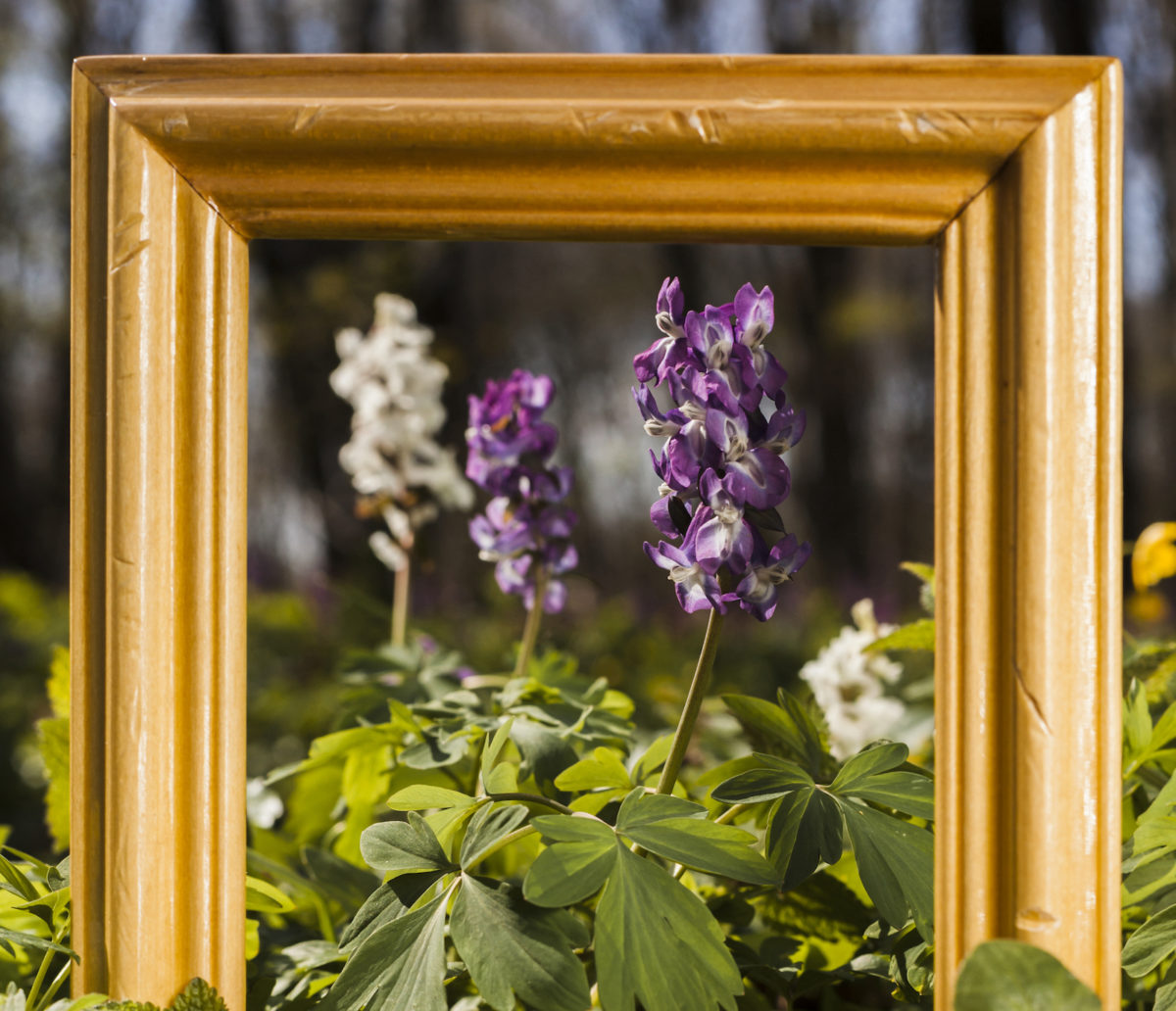by Bruce Bennet • Trompe l’oeil is the French term for “fool the eye,” and is an artistic phrase used for the creation of optical illusions of three-dimensional space and objects on a two-dimensional surface. While the term usually deals with paintings, gardeners can use several of the same techniques to make their three-dimensional green spaces appear larger than they are (and who wouldn’t like a larger back yard or garden?). Trompe l’oeil makes visitors question the boundary between an artificially created world and what actually exists.
The practice of illusion painting appears to have begun in the Greek states some three thousand years ago. By the time of the Renaissance, the practice of painting just wall murals moved on to creating “forced perspective” in architecture. This technique is probably most noticed by the largest number people in this country when they gaze at Disneyland’s Cinderella’s Castle, the forced perspective (larger ground floor and smaller towers) of which makes the building look much taller than it really is.
In the garden, the same “smoke and mirrors” techniques of trompe l’oeil allows you to create the appearance of more garden and larger yards. Let’s discuss a few DIY examples to make real estate agents rethink your property value.
Trompe l’oeil is all about illusion, subterfuge and fun. The technique involves using the laws of visual perspective to create an impression of depth on flat walls (like a mural) or in open 3-D spaces. Sometimes the creation is intended as a joke, but not always. The technique has been used on garden walls and fences to make gardens appear larger than they really are. The most observed wall illusion that garden centers sell is the trellis, which sports angles that make it appear to be of greater depth than it is.
The easiest trick a gardener can do is simply to place bright-colored flowers at the front border of a planting bed and, then install other plants that fade in colors — for example, blues and grays — toward the back of the bed. This process creates a visual sense of increased distance between the viewer and the back border without costing more money than would have otherwise been spent on the gardening project.
Find the longest view line in the garden. Most gardens are rectangles; those that are short and wide look even smaller. This is because we usually look straight into the back of the yard. By simply turning sideways and looking into the corner of the yard, the area looks bigger. It is a trick of geometry: the diagonal is always longer than either of the sides of a rectangle, thus increasing the greater sense of depth and space. Draw a simple map of your yard and draw the longest perspectives lines (aka, lines of sight) you can achieve. You can lay out your garden so that attention is drawn to an object or setting at the end of these lines.
Place eye catching features at the end of the long view lines. You can direct visitors’ eyes to go where you want them to by placing a feature at the very end of the longest perspective lines you found. It is a simple way of tricking the eye. When a new landscape is seen for the first time, visitors unconsciously search for something to fix their eyes on, something that stands out. You just need to provide it and place it as far away as possible to create the feel of distance. Use your imagination and choose something that fits with your design.
Blurring the boundaries of where your garden ends and the next space/yard begins is a simple option to make small spaces look larger. One easy way to achieve this is by using informal plantings at varying heights to make it unclear how far your boundaries truly extend. To heighten the effect, keep shorter plantings closer to your living/working space and allow the heights to gradually increase. Steering away from formal box hedges will blur these lines even further.
Use mirrors to expand the feel of gardens as you would do with indoor rooms. Choose large and sturdy mirrors, metal ones for example, because you don’t want them to break. Place them where you know your garden shows its limits: at the back, against the fence, or the wall of your neighbor’s home, but hide them a bit. Allow plants and vines to grow partly over them, to smooth down their edges so they look embedded in a natural environment, like old ruins left in a forest, etc. You can also paint them to disguise them. For example, a tall mirror on the back fence can turn into a false door if you draw or build a frame, handle, casement, etc. Be creative, and shop around at antique dealers, fairs, and second-hand stores for a very original look and solution for your small space.Or build your own illusion.
A final easy trick is to create a line of multiple look-alike containers of descending sizes with the largest located closest to the viewer and smaller ones taking the visitor back into the garden. Not only does this increase visual depth perception, it can add a bit of instant and year-round color to the venue.
There are certainly more landscape-expanding ideas in the realm of trompe l’oeil. Get ready to make your small garden look spectacular with these visual perspective tricks as well as other ideas you’ll find in garden design articles and trompe l’oeil books.
Contributing columnist, Bruce Bennett, is a WSU Master Gardener, lecturer and garden designer. If you have questions concerning this article, have a gardening question or two to ask concerning your landscape or want to suggest a topic for a future column, contact Bruce at gardenguy4u@gmail.com. Photo by freepik.com


